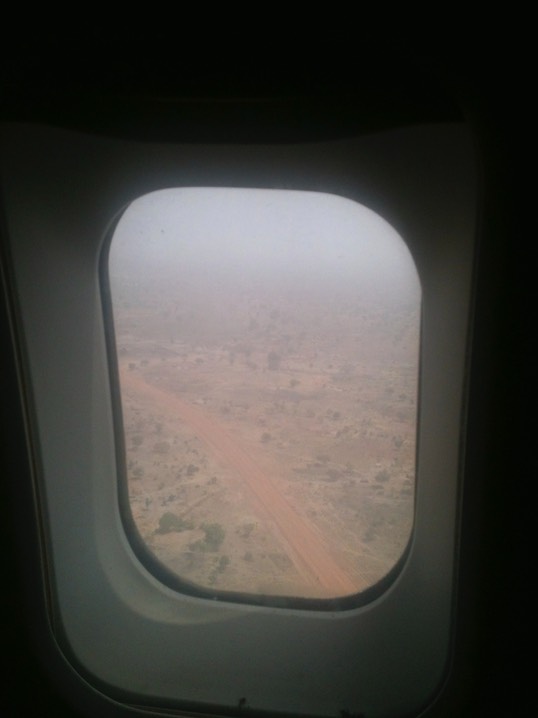Aweil is a town in northwestern South Sudan and another stop on our way.
A small plane left Juba International Airport for Aweil in the morning, two hours late because it was delayed on its earlier flight from somewhere else. Juba Airport's boarding gate area is not a place you want to be stuck in.
Aweil lies in the middle of nowhere. And it wasn't even our final destination.

Aweil's airport is an airfield. We landed on what appeared to be sand and saw nothing but a few strawhuts and two larger tents in the vicinity. Some 100 feet from the plane stood a group of people waiting to board for the return flight. Several men in uniforms were present. Next to the airfield sat an aircraft that had crashed here last November. The whole scene was very much like a scene from a movie.
A small truck brought our bags from the plane to where we were lead.
A car was waiting for us. The driver didn't speak English but was the best and most careful driver I have ever met. The road north from Aweil was paved for a while but then became part of the general landscape. Technically, a "road" remained visible but it had so many potholes that our driver drove to the left or right of the street most of the time, passing the actual road only when crossing from one side to the other.
Some two hours later we arrived in Wanyjok, a small town just south of the Darfurian border.
This is how the town appears on Bing maps.

I managed to connect to the Internet and post a facebook update from my mobile phone and found myself in what amounts to unknown, to Nokia, territory.
Google maps identifies the place a bit better.

It was difficult to tell when the city of Aweil ended, when the town of Wanyjok began and whether we drove through any other town between them because people seemed to be living everywhere near the road. Straw hut stood next to straw hut and people lived in those huts which were not larger than a Volkswagen van. Most of life happens outside anyway but sitting here in my flat in a comfy chair typing what I remember into my laptop does feel odd considering that many people own little more than what they can keep in a small hut.
We are reminded of such a life on sukkot, the feast of booths, and it now occurs to me that perhaps the custom of actually sleeping in a sukka every year serves as a useful reminder of how most people live on our planet.
See here for pictures of Aweil airfield and the road.
See here for pictures of Wanyjok.
Finally, I added an article about slavery in the Sudan.
